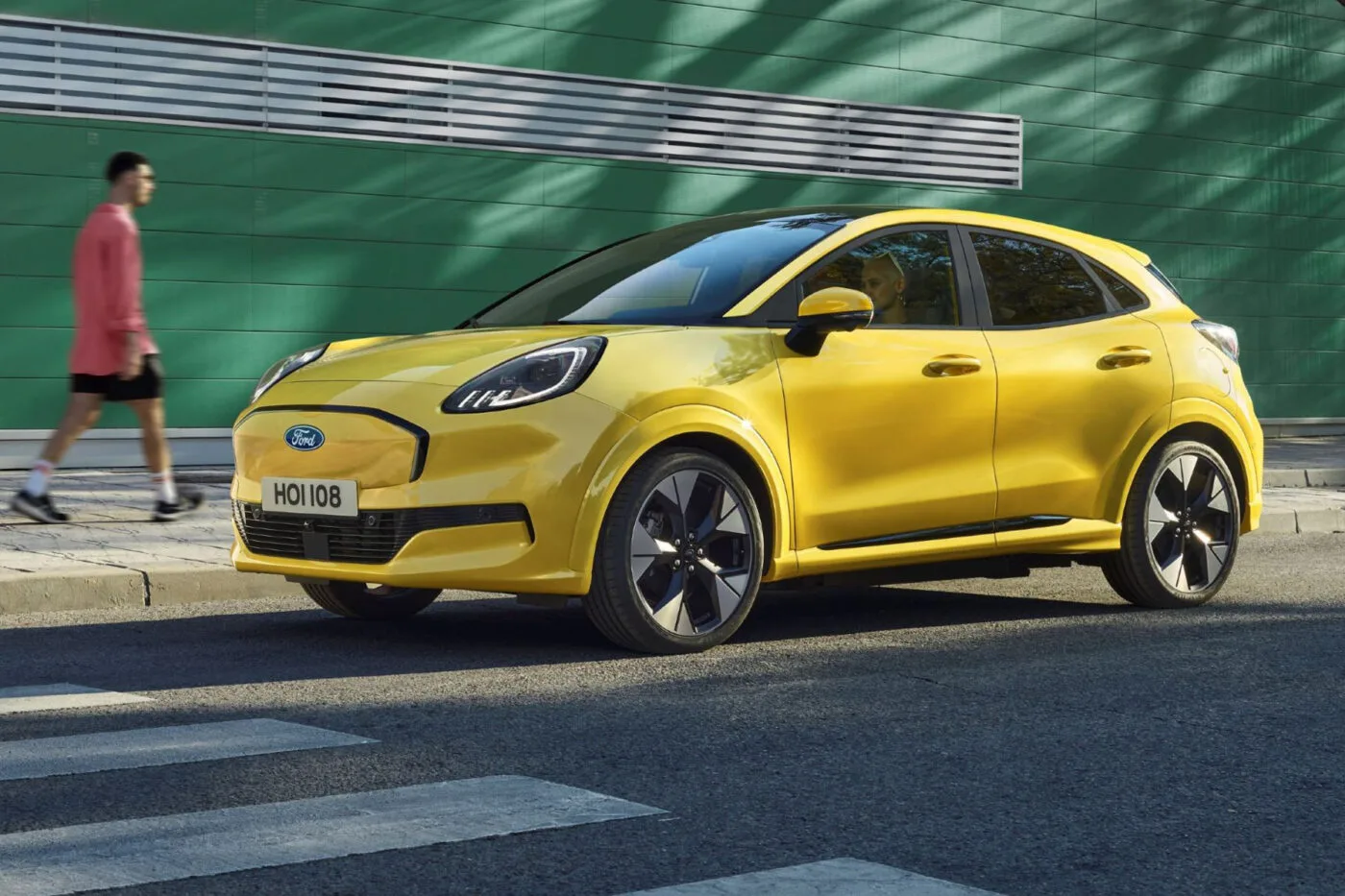The Ford Puma is the brand’s best-selling model in Europe. Ford has now unveiled the electric version. The Cologne-based manufacturer emphasises its dynamic acceleration and efficiency. Nevertheless, it is unclear whether the Puma Gen-E will really be well received – because of the battery and its price.
One thing is clear: Ford is not in an easy situation. Sales in Europe are falling steadily, and the decisions made years ago by top management have had a major impact on Ford’s model range. Former bestsellers such as the Fiesta small car and the large Mondeo are no longer available, and the days of the Ford Focus are numbered – its production in Saarlouis, Germany, will end in November 2025, and the plant is to be closed. At the Cologne plant, Ford is building electric SUVs based on the Volkswagen MEB instead of the Fiesta. They are not bad cars, but so far, they are no replacement for the Fiesta in terms of unit numbers. That is partly because there are comparable models from the VW Group, some for less money.
Enter the Puma Gen-E: the crossover series built in Craiova, Romania, has already become the brand’s bestseller in its first generation as a combustion engine and hybrid. It thus makes sense to electrify the model. After all, Ford’s MEB models and the first Mustang Mach-E imported from Mexico have not really taken off in Europe so far.
Can the Puma Gen-E become Ford’s electric bestseller in Europe?
It is unlikely to fail on looks at least. It is – unsurprisingly – a Puma with a closed radiator grille. Electric car purists will be annoyed by the long front, which is not necessary without a combustion engine on board. However, many customers do not want a futuristically styled electric car but simply want to drive their favourite model with an electric drive – BMW and Stellantis sold many electric cars this way. In the case of the Puma, Ford speaks of the “exterior design appreciated by customers,” which has been “refined” – for example, with the closed radiator grille, which is only outlined with a black element in the style of the Mustang Mach-E GT.
“Our customers love the Puma’s design,” says Amko Leenarts, Director of Design. “We built on this for the Puma Gen-E and developed our own style for it with exclusive details, without distancing ourselves from the brilliance of the original.”
The electric motor under the front bonnet has an output of 123 kW and a torque of 290 Newton metres. It enables the Puma Gen-E to accelerate from a standstill to 100 kph in 8.0 seconds (almost as fast as the most powerful combustion engine model) and reach a maximum speed of 160 kph – more than sufficient performance data for a city crossover, no question. With a WLTP consumption of 13.1 kWh/100km, the drive system built by Ford in Halewood, UK, is also characterised by very good efficiency – even if consumption rises to up to 14.5 kWh/100km with the premium equipment: These are good figures.
One factor that is likely to limit the customer base of the Puma Gen-E, despite the efficient drive, is the battery. The Puma uses the same type of battery as its platform brothers, the E-Transit Courier and E-Tourneo Courier, which also roll off the production line in Craiova. The 43 kWh battery with NMC cells in the Puma Gen-E provides a WLTP range of 347 to a maximum of 376 kilometres, depending on the equipment. Although this is better than the panel vans (288 kilometres), it will likely scare off some customers. After all, if motorway consumption in winter rises towards or even slightly above 20 kWh/100 km, the range drops noticeably. It will be more than sufficient on most days of the year – but cars are also bought according to “maximum requirements.” If the vehicle is also purchased for holiday trips or longer excursions, many people will be driving around with a battery that is too large. And Ford does not offer the option of ordering a larger battery for an additional charge.
However, the Puma Gen-E can score points with another feature: a very short charging time. Direct current flows into the 43 kWh battery at a maximum of 100 kW, and Ford specifies the charging time from ten to 80 per cent as 23 minutes – or 23.2 minutes, to be precise. As 43 kWh is the usable net energy content, 30 kWh flows into the battery to get from 10 to 80 per cent. The average charging power in this range is thus 78 kW – a very respectable figure considering the size of the battery. The first tests will then show how well the Puma Gen-E performs on the motorway with many but short charging stops. – By Sebastian Schaal, electrive.com













